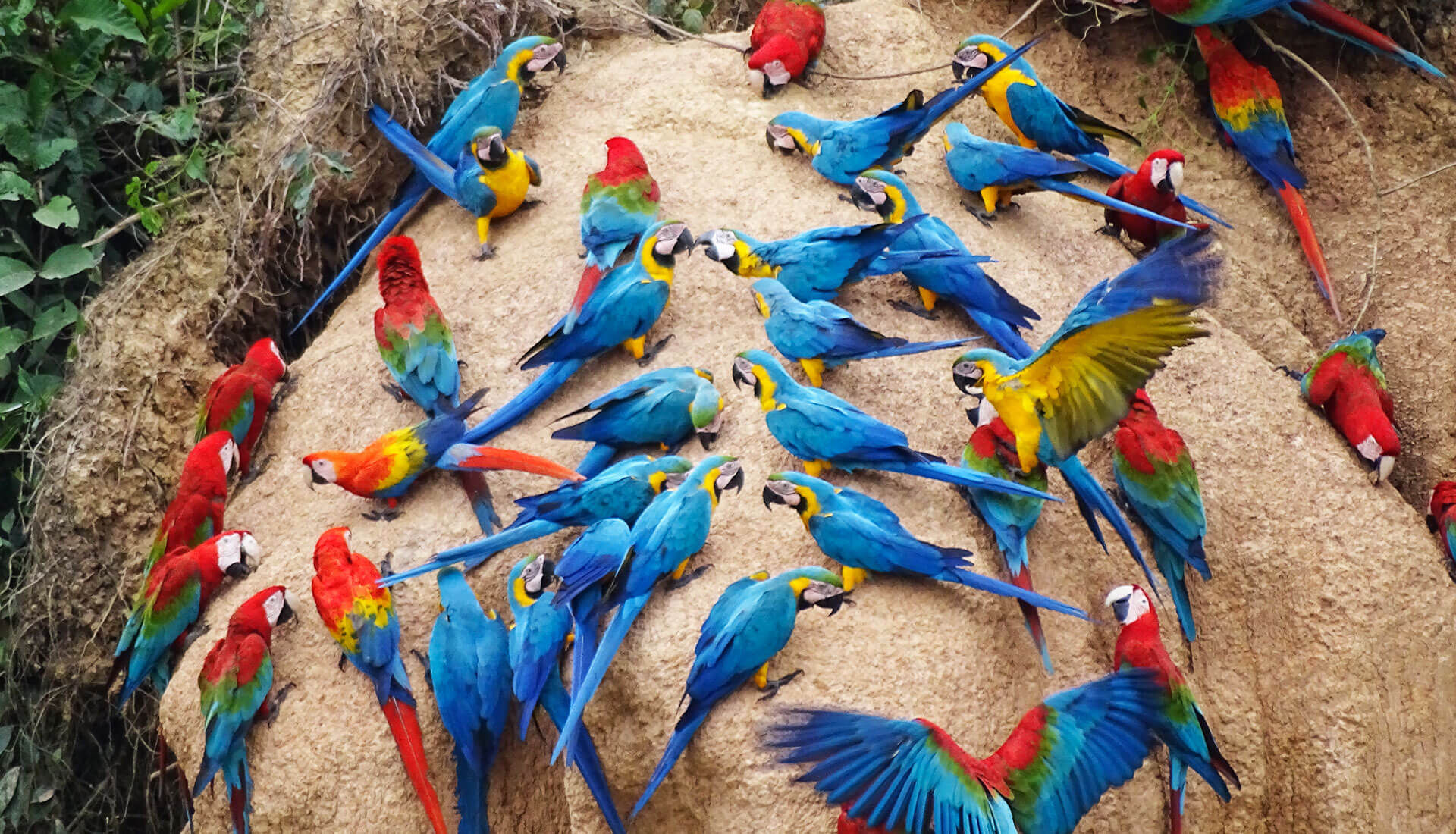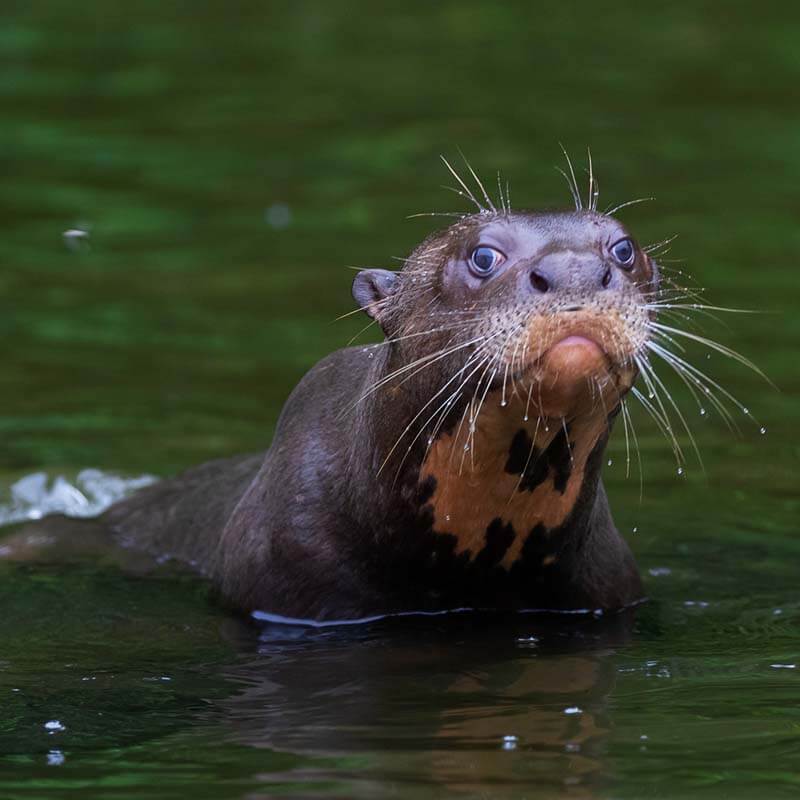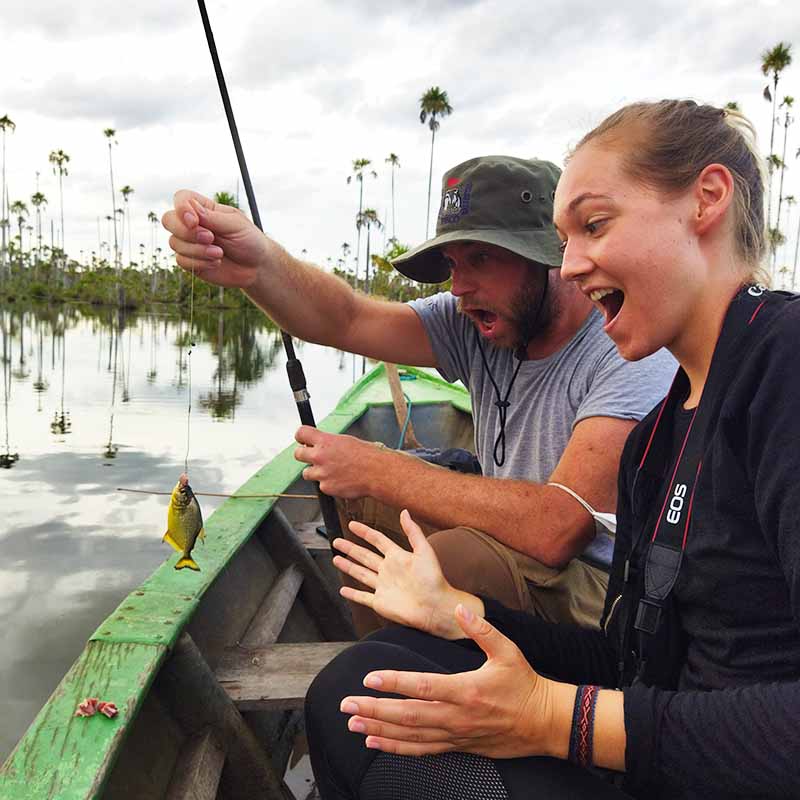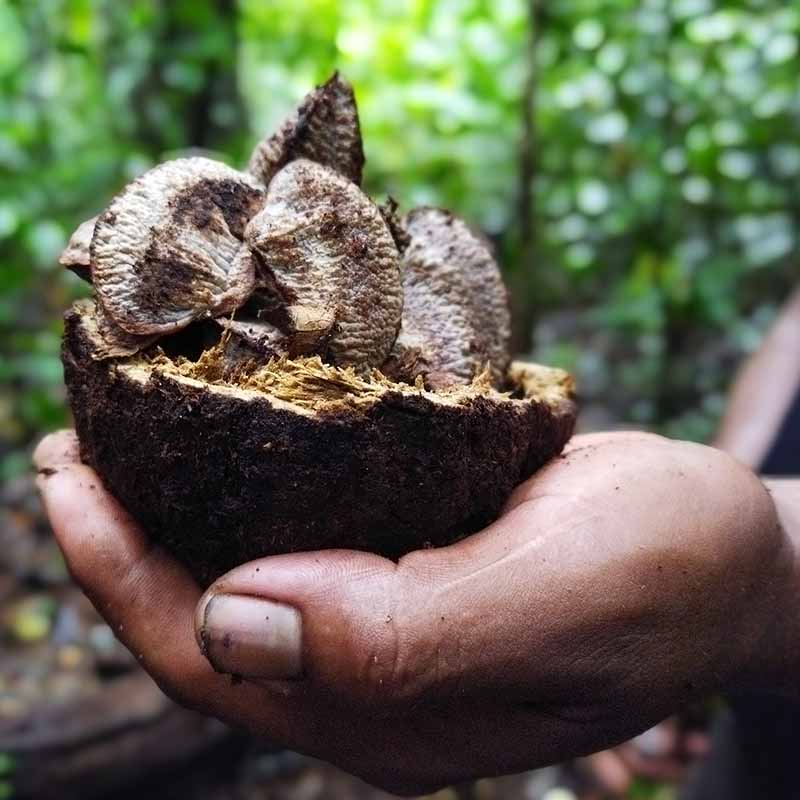River Wolf – Giant Otter of the Tambopata
The river wolf (scientific name: Pteronura brasiliensis) is the largest species in the mustelid family, which includes otters, weasels and ferrets. It is an endemic species of South America, the warm climate and the great rivers with all their fish, are their habitat. The wolf of Rio, by its extremely social nature, live in families of 3 to 8 individuals, and has even registered families of 20 individuals that hunt together and otters that have traveled 520 km to find a mate. The river wolf, not having a natural predator, competes with...
PIRANHAS IN THE TAMBOPATA NATIONAL RESERVE
Everyone who travels to the jungle knows the piranha: the terrifying, toothy creature that have attacked generations of Hollywood stars, right? Learn the real truth! Scientists believe there are 30 to 60 species of piranhas, from the small yellow-bellied piranha, to the 50 cm red-bellied piranha, they have impressive teeth and some travel in groups. They are omnivores, eating mainly seeds, nuts, algae and sometimes other animals. Piranhas are even a food source in some parts of the Amazon. As a freshwater fish that loves dark, calm waters, piranhas do not actually...
ORIGIN OF THE CHESTNUT OR ALSO CALLED BRAZIL NUT
Bertholletia excelsa is a tree native to South America. BOTANY OF NUT Family: Lecythidaceae Habit: evergreen tree Growth rate: medium Pollinators: bees Self-pollinating: No Growing Season: Cultivated, wild. Brazil nut trees, better known locally as “castañas” are some of the tallest in the Amazon, and extend up to 50 meters (160 feet). The nuts themselves into coconut-like shells that weigh up to five pounds and are so hard that we can only crack them open with several machete blows. the nuts are packed with healthy fats, protein and vitamins, making them popular around...





